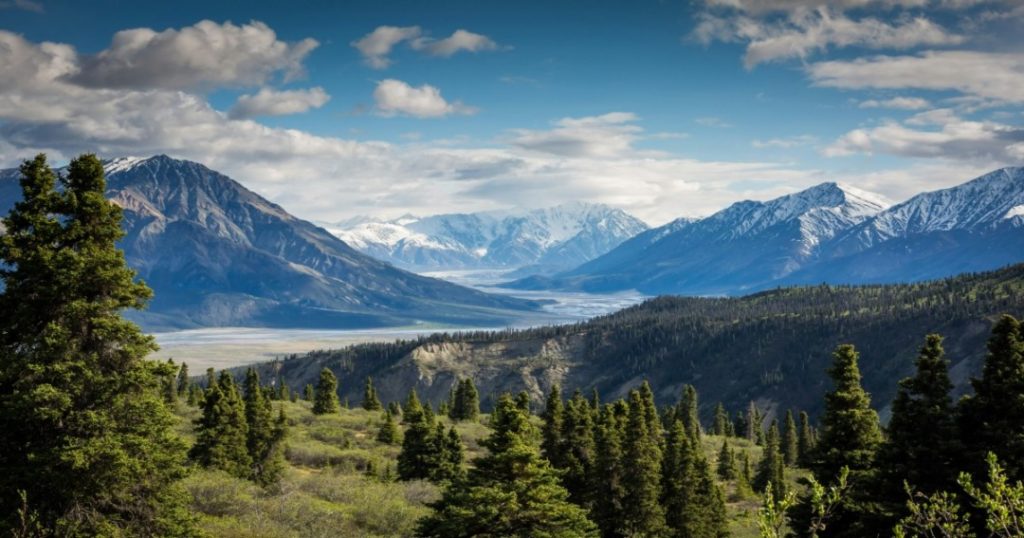
The seven sisters in India are the tucked away states of the NorthEast region, i.e., Arunachal Pradesh, Assam, Meghalaya, Manipur, Mizoram, Nagaland, and Tripura (Sikkim is also in the northeastern region but since it’s not geographically connected to the rest, it’s not included). Bordered by Bhutan, China, Myanmar, and Bangladesh, these lands are connected to the rest of India by a narrow 22-kilometre stretch called the Siliguri Corridor, often referred to as the “Chicken’s Neck.” This geographical isolation has helped preserve their distinct cultures, dialects, and landscapes, making the seven sister states of India a world within a world.
Get to Know the Seven Sisters in India
Geographically the northeastern region is a masterpiece. You have the mighty Brahmaputra river through Assam, Arunachal gets the mighty Himalayas, the largest cave in India can be found in Meghalaya, Mizoram and Nagaland are blanketed in lush forests and highlands, and Tripura is dotted with temple rock carvings and beautiful lakes. Together, the Seven Sisters in India span mountains, rainforests, grasslands, and river islands, making it one of the most ecologically diverse corners of Asia.
Culturally, seven sisters of north east have tribes dotted all over the region, with distinct facial marks, adornations, festivals and practices. Traditional festivals like Hornbill (Nagaland), Sangai (Manipur), Chapchar Kut (Mizoram), and Bihu (Assam) keep centuries-old customs alive through dance, music, and food.
Historically, the Seven Sisters in India were once remote frontier lands, part of various indigenous kingdoms and princely states before merging with independent India after 1947. Roads, tourism, and infrastructure have since opened up, but much of the region remains unspoiled. Unlike the more commercialized Himalayan states, this part of India offers travelers raw authenticity.
Places to Visit in the Seven Sisters in India
Explurger is by a traveler, for a traveler, an app that values genuine exploration over doomscrolling, and that’s why we know what real travelers crave. In this blog we will cover 35 places to visit in the Seven Sisters in India.
1. ASSAM
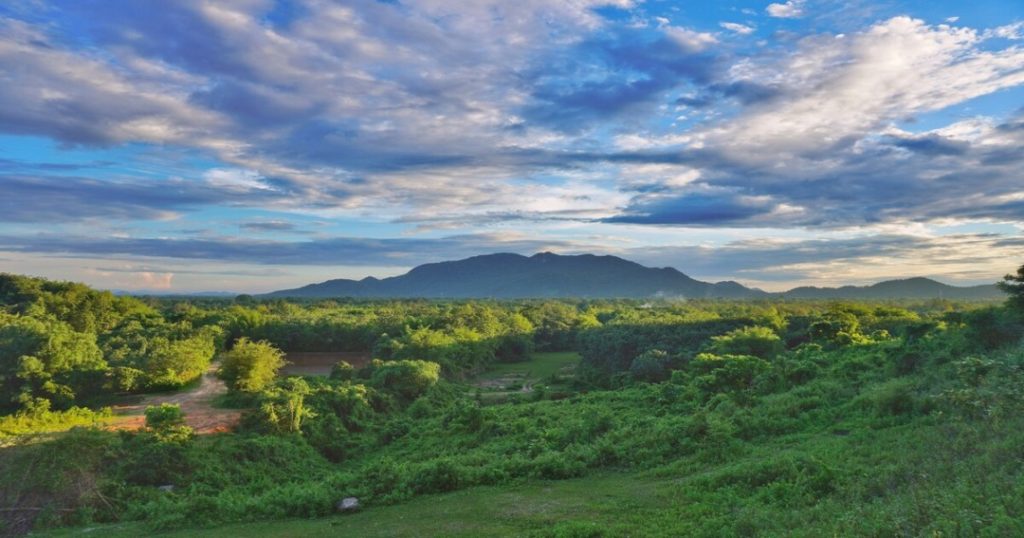
Often called Gateway to Seven Sisters in India. Assam lies south of the eastern Himalayas and stretches along the mighty Brahmaputra and Barak rivers. Its fertile plains make it one of the most agriculturally rich regions in India. Vast stretches of tea gardens roll across hills like green waves, especially around Jorhat, Dibrugarh, and Tinsukia—the very lands that produce the world-famous Assam tea.
Places to visit in Assam:
- Panimur Waterfall, Dima Hasao: A secluded cascade locally called the “Niagara of Assam.” Ideal for picnics, camping or a lazy day.
- Haflong: It’s the only hill station in Assam, with beautiful lush green valleys, mountain views and enchanting forests. Here you can visit Jatinga village, which is famous for its bird suicide.
- Sadiya: One of the oldest towns in the seven sisters in india, set on the banks of the Brahmaputra, do check out the Dhola-Sadiya Bridge, which is the longest river bridge in India. Visit historical and archaeological sites and enjoy the beauty of the town.
- Dehing Patkai Rainforest: Known as the “Amazon of the East,” but still far from tourist footprints. It has Dehing, a Brahmaputra tributary cutting through it, making it one of the best places to visit in Assam.
- Digboi Heritage Trails: Asia’s oldest oil town, birthplace of India’s oil industry, surrounded by quiet tea villages and colonial relics. A great spot for people who like to indulge in history.
Local Tip: Visit between November and April for clear skies and blooming valleys.
Check out more about Assam in our blog- Top tourist destinations in Assam.
2. ARUNACHAL PRADESH
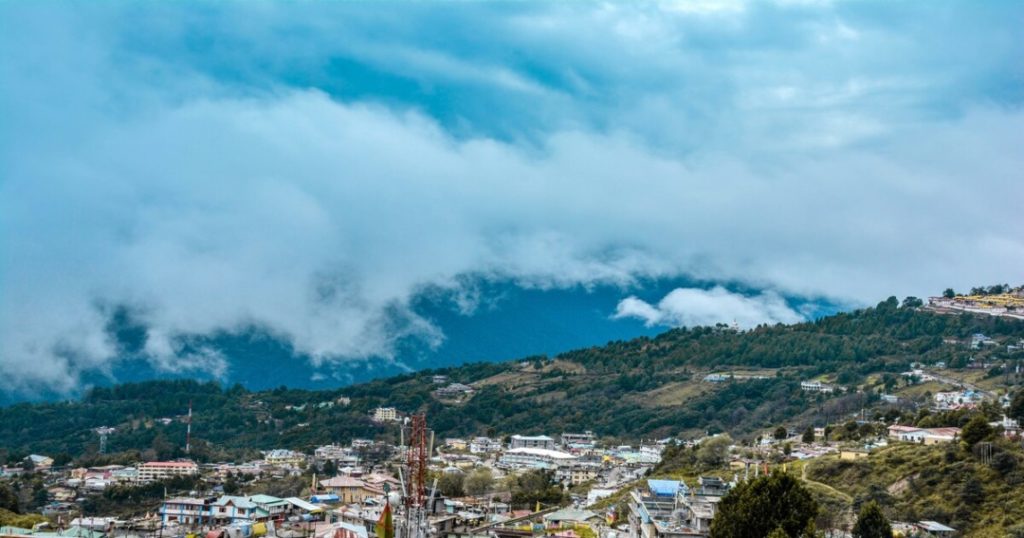
Arunachal Pradesh is often called the “Land of the Rising Sun” its village, Dong is known as the first place in India to witness the sunrise each day. It’s one of the most mystical parts of the seven sisters in India, sharing borders with Bhutan, China (Tibet), and Myanmar. China and India have a long standing battle over its occupancy, with the PRC claiming it as part of South Tibet. The 1962 Indo-China War left deep historical footprints, and memorials like the Jaswant Garh War Memorial near Tawang stand as quiet reminders of that past.
The state is known for its rugged mountains, hidden monasteries, and ancient tribal cultures that have survived untouched for centuries. Almost 80% of its region is covered in dense forests. The Himalayan ranges, including Kangto and Gorichen peaks, dominate the north, while rivers like the Siang (Brahmaputra’s upper course), Subansiri, and Lohit carve deep valleys through the mountains.
Places to Visit in Arunachal Pradesh:
- Mechuka: A postcard valley of wooden houses and Buddhist prayers floating in the wind. Check out the places to visit in Mechuka.
- Dirang: A serene valley with hot springs, kiwi farms, and ancient monasteries.
- Ziro’s Villages (Hong, Hari, Bulla): Cultural heartlands of the Apatani tribe known for sustainable living. Check out the places to visit, festivals and more.
- Roing: Home to archaeological ruins and pristine lakes fringed by forests. Visit the Mehao Wildlife Sanctuary and old forts.
- Nuranang Falls (Jung Falls): Just before Tawang, but quieter and more dramatic than most. Its a 100 meter waterfall famous for being an SRK song backdrop in the movie Koyla.
Best Time: October to March is a great time to visit the seven sisters in india, when the weather is crisp and skies clear.
3. MANIPUR
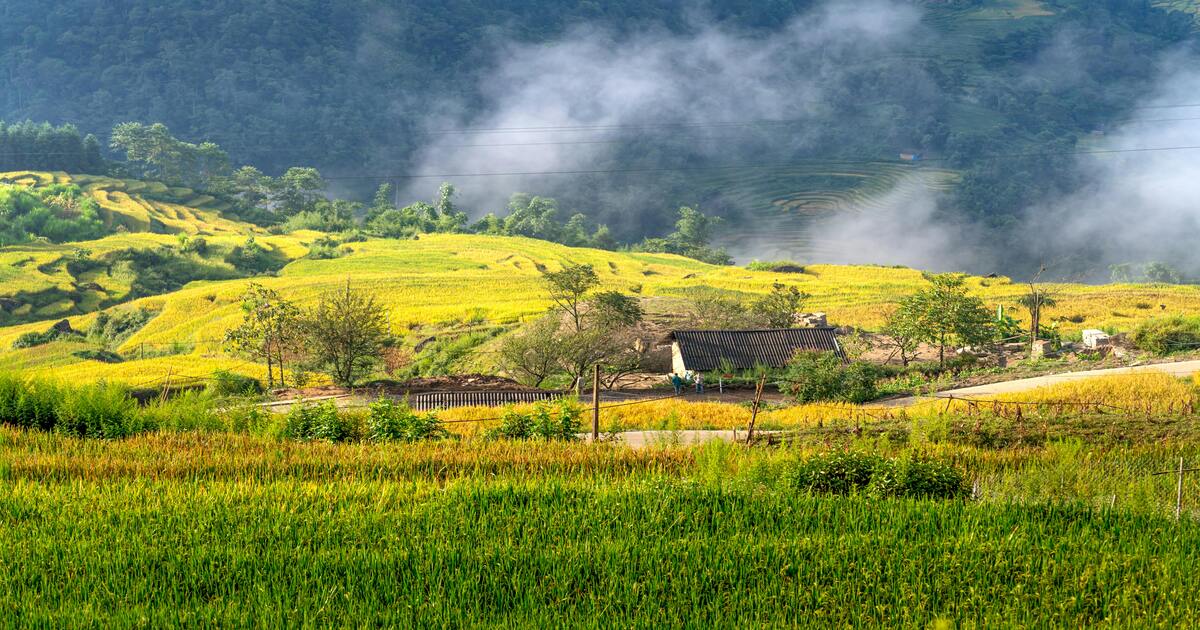
Manipur, once an independent kingdom with records dating back to 33 AD, was a center of art, literature, and warfare before merging with India in 1949. In recent years, the state has faced ethnic tensions between hill and valley communities, but major tourist spots like Imphal, Loktak, and Ukhrul remain peaceful and welcoming. With a little cultural sensitivity and awareness, travelers can explore one of the most beautiful and resilient states among the seven sisters in India, and support its journey toward harmony through tourism.
Places to visit in Manipur, The Jewel of the East
- Zeilad Lake and Wildlife Sanctuary: A cluster of serene lakes nestled amidst green highlands.
- Khangkhui Cave: Limestone caves filled with archaeological artefacts that history enthusiasts will enjoy. A must visit in the seven sisters in india.
- Shirui Kashong Peak: It is the highest peak in Manipur, where the rare Shirui Lily blooms, painting the hills pink.
- Khongjom Hills: A historical site overlooking the Imphal plains, ideal for sunset views.
Travel Tip: Spring (March–May) is when the valley turns into a painter’s palette.
Natural Geographical Wonders in India: A Traveler’s Guide to the Earth’s Oldest Secrets
4. MEGHALAYA
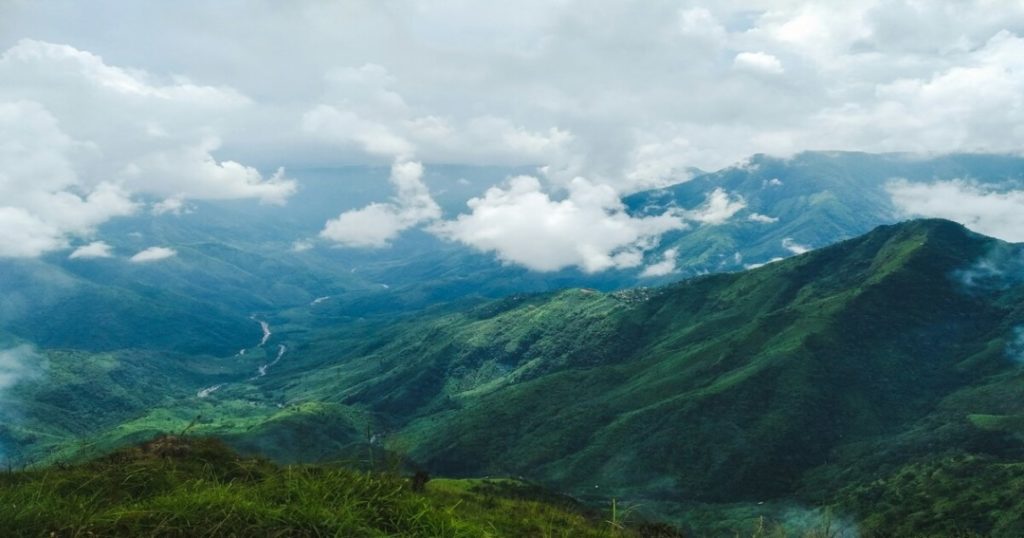
Meaning “the abode of clouds” in Sanskrit, Meghalaya is one of the most enchanting states among the seven sisters in India. One of the rainiest regions in the world, it is made for slow travelers. You’ve got lush hills, rain streaked plantations, caves, natural bridges, pristine rivers and more. It is home to Mawlynnong, often called Asia’s cleanest village.
PLACES TO VISIT IN MEGHALAYA : A COMPLETE GUIDE
- Kongthong: The “whistling village,” where people call each other by tunes.
- Mawryngkhang Trek: A bamboo trail leading to dizzying views and adventure. The local legends relating to this are insane so make sure to hire a guide.
- Nongkhnum Island: India’s second-largest river island, almost unknown to outsiders. Makes seven sisters in india way more exciting than any other place in the world!
- Weinia Falls & Tyrshi Falls: Stunning but rarely crowded waterfalls in the Jaintia Hills.
- Pamphyrnai Lake: A tranquil lake embraced by forested hills.
Insider Tip: Stay in local homestays for the best Khasi and Jaintia experiences.
5. MIZORAM
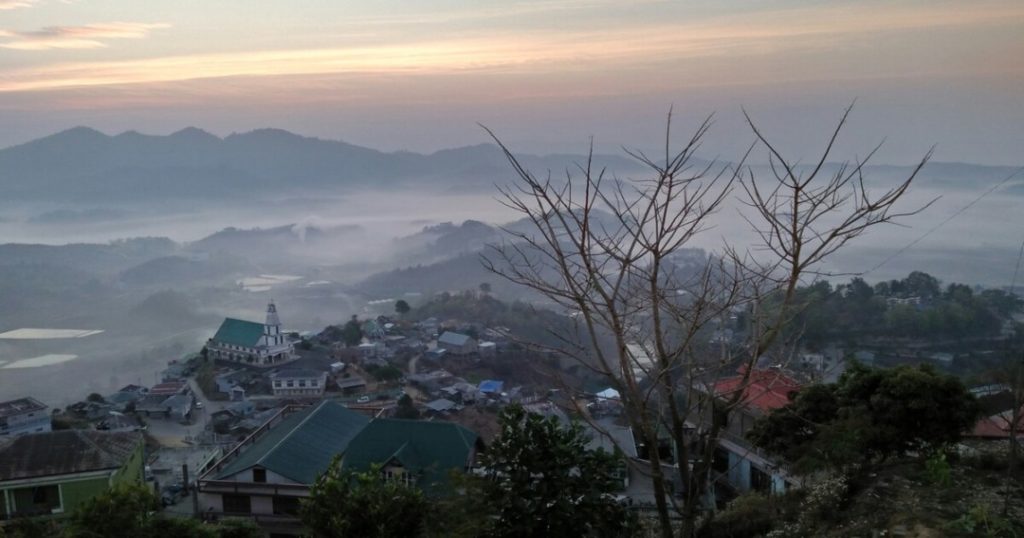
Known as the Land of Blue Mountains, this southern tip of the seven sisters in India shares borders with Myanmar and Bangladesh, and offers beautiful landscapes. It has one of the highest literacy rates in India. With the warm culture and hospitality, identical to other seven sisters in india, it is ideal for travelers seeking peace, greenery, and genuine warmth.
Places to Visit in Mizoram
- Tamdil Lake: A peaceful retreat fringed with pine and bamboo.
- Reiek Village: Traditional Mizo houses with views over endless green ridges.
- Vantawng Falls: Cascading in three layers, hidden deep in the forest.
- Champhai: Known as the “Fruit Bowl of Mizoram,” full of vineyards and misty valleys. It facilitates cross-border trade with Myanmar.
- Thenzawl: A small town with the mesmerizing Tuirihiau Falls and handloom villages.
Pro Tip: Visit in winter (Nov–Feb) for cool weather and clear horizons.
6. NAGALAND

Nagaland, the eastern sentinel of the seven sisters in India, is often described as “the land of festivals.” Every tribe here celebrates life, harvest, and identity with vibrant dances, music, and colorful attire. Bordering Myanmar to the east, Nagaland is a patchwork of high mountains, deep valleys, and terraced rice fields.
Places to visit in Nagaland
- Khonoma: India’s first green village, known for its eco-warrior heritage. The seven sisters in india are home to more than what people give it credit for.
- Dzuleke: A serene valley run entirely by locals practicing sustainable tourism.
- Mon District: Home to the Konyak tribe, known for intricate woodcraft and tattoo traditions.
- Japfü Ridge: Mountain range in Nagaland, with Mt. Japfü at an elevation of 3,048 meters (10,000 ft).
- Benreu Village: Overlooks the Dzüko Valley without the usual trek crowds.
Visit During: December to catch the Hornbill Festival or spring for quiet village life.
8. TRIPURA
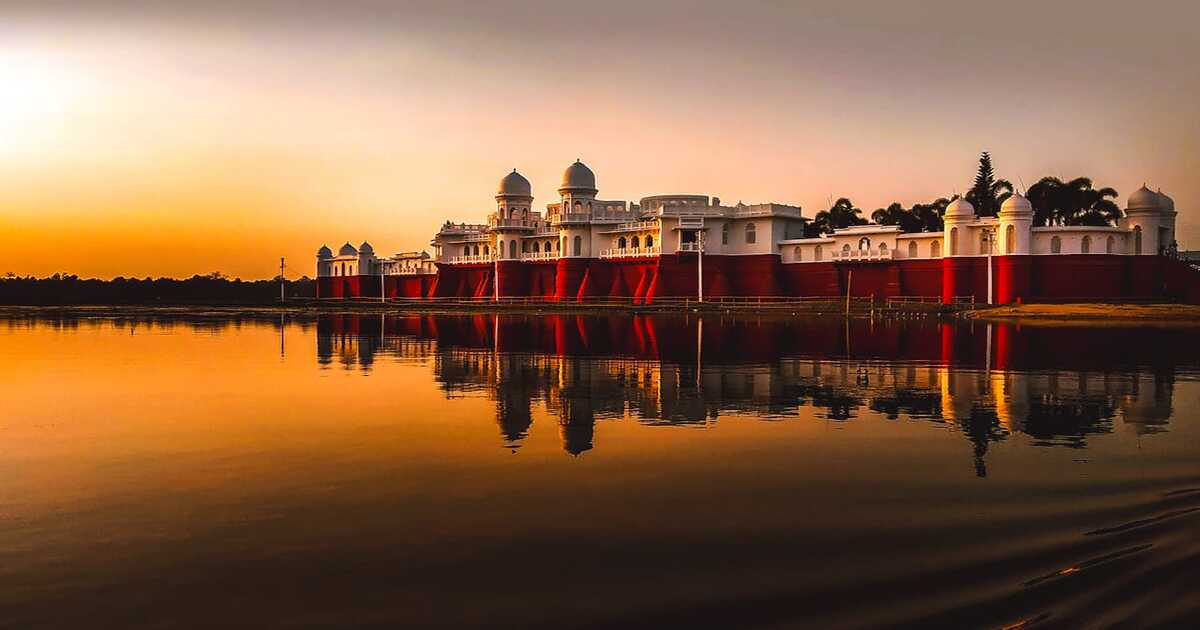
Often overshadowed by its more famous neighbors, Tripura is a quiet and honestly, lovely place, among the seven sisters in India, a small yet historically rich state filled with palaces, lakes, and lush green hills. The Gumti River flows across the state, feeding lakes and wetlands that are home to migratory birds. Tripura lies in the southwest corner of the seven sister states of India, bordered by Bangladesh on three sides and connected to two of the seven sisters in india (Assam and Mizoram) in the north and east.
Places to Visit in Tripura
- Unakoti: Rock-cut carvings of Shiva heads hidden in moss-laden hills. This place located in the seven sisters in india is on the list of UNESCO tentative World Heritage site
- Pilak: Archaeological site with Buddhist and Hindu relics dating back to the 8th century.
- Jampui Hills: Panoramic sunrise points and orange orchards. The average elevation is 1000 feet above sea level.
- Neermahal Palace: The “Lake Palace of the East,” built in the 1930s surrounded by Rudrasagar Lake.
- Sepahijala Sanctuary: Ideal for quiet birding and nature walks. It’s a very important biodiversity hotspot in India, a must visit for nature lovers.
Local Tip: Combine Agartala with rural homestays to explore Tripura’s slower side.
Stores of the seven sisters in india
Together, the seven sister states of India show how diverse and connected the Northeast really is. Despite differences in language and lifestyle, the people here share a deep respect for nature, community, and culture. Each state offers something different — from Assam’s tea estates and river islands to Arunachal’s mountain passes, Manipur’s floating lake, Meghalaya’s living root bridges, Mizoram’s green hills, Nagaland’s cultural festivals, and Tripura’s palaces and temples.
If you’re looking to explore beyond the usual, the 7 sister of India are where real discovery begins. They’re not just scenic spots, but living regions that represent the quieter, more authentic side of India. And what better place to start than on Explurger, a travel social media app committed to making sure real travelers discover real good places! Add these destinations to your bucket list and start your journey today.
FAQs About seven sisters in india
2. Which is the most beautiful state in the Seven Sisters?
Each place has its own advantages. But Arunachal’s untouched landscapes are considered the most beautiful.
3. Why are 7 sisters called 7 sisters?
The term “Seven Sisters” was first used in 1972 by journalist Jyoti Prasad Saikia when describing the interdependence and shared culture of these northeastern states. They are geographically connected and historically linked through trade, culture, and ethnicity. Their close proximity and cultural ties earned them the collective name “seven sisters in India.”

